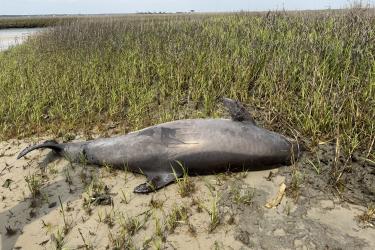Since 1954, NOAA Fisheries’ Cooperative Tagging Center has collaborated with charter captains, anglers, and commercial fishermen to study highly migratory fish species. More than 10,000 volunteers have been involved in tagging and releasing fish species of interest. The information they collect helps scientists learn more about their movements, seasonal patterns, and more. All of this information supports management of more sustainable fisheries.
Over the past seven decades, more than 10,000 volunteer anglers have tagged 212,000 highly migratory fish from 30 different species. We’ve also recorded 8,343 recaptures. While those are impressive numbers overall, we want to recognize the individual anglers who have tagged the most fish for our Cooperative Tagging Center—by species, by year, and over their lifetimes in a new Top Taggers web page.
We greatly appreciate the contributions of all of our cooperating anglers across the Southeast and beyond—without whom this work wouldn’t be possible.
Counts for top taggers of each year will be calculated by January 31 for the previous calendar year. Please submit your tagging cards in a timely manner to ensure your tagging efforts are recognized.
Top fish taggers for the Cooperative Tagging Center
Tagging Accomplishments
The Southeast Fisheries Science Center also just published the latest edition of the Cooperative Tagging Center Newsletter. This document provides a detailed update of the center’s tagging accomplishments from 2020–2023 include:
- 3,050 highly migratory fish tagged
- 110 fish recaptured
- More than 200 participating captains
We’ve also learned quite a bit over the past few years about how far highly migratory species will go. The longest distance recorded between tagging and recapture locations was more than 9,000 miles covered by a blue marlin. This fish was tagged in 1989 by Richard Ryon in Wilmington Canyon off the coast of Delaware and was recaptured in 1992 off Mauritius, an island in the Indian Ocean. These data also help us learn about how old fish can get, without lethally sampling for otoliths. For example, a recaptured bluefin tuna was at large for 18 years (they can live for more than 30)!
Could You Be the Next Top Tagger?
Do you catch and release billfish, tuna, swordfish? What about coastal migratory pelagics like cobia, king and Spanish mackerel, greater amberjack, almaco jack, or jack crevalle? Request a free tagging kit from the Cooperative Tagging Center:
- (800) 437-3936
- Tagging@NOAA.gov
About Citizen Science
Public participation in scientific research is a growing trend in our increasingly crowdsourced world. Citizen science typically involves data collection by members of the public who pass their information along to researchers trying to answer real-world questions.



